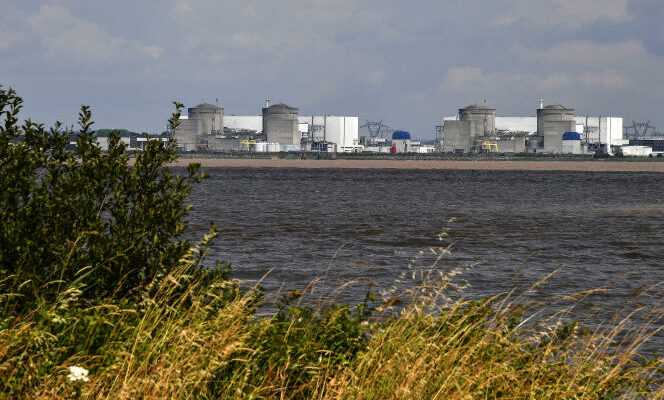In the event of a heat wave or drought, nuclear power plants sometimes have to produce less. With global warming, the scenario could increasingly occur in spring or autumn, and not only in summer. Example: Monday, May 9, “due to forecasts of high temperatures in some rivers” and to save them from additional heat, the electrician EDF announced possible restrictions until Sunday 15 on the site of Blayais, in the estuary of the Gironde – the water, first pumped to cool the plant, then returns warmer to nature.
On the scale of a year and of the entire nuclear fleet, the impact remains minimal. He “does not lead to a revision of the nuclear production estimate for 2022”explains EDF to World. The French operator is already expecting a year that has been historically low for three decades – according to its indications, barely twenty-nine out of fifty-six reactors were operating on Wednesday May 11 – but for other reasons, which relate to the impact of Covid-19 on the maintenance schedule and corrosion problems.
“Since 2000, production losses due to high river temperature and low river flow have represented an average of 0.3% of the park’s annual production”, indicates EDF. A particular case: during the heat wave of 2003, the percentage had risen to 1.5%, according to data transmitted by RTE, the national manager of the electricity transmission network. More occasionally, the high summer heat of 2019 caused unavailability of around 6 gigawatts simultaneously: almost 10% of the installed capacity of the park.
Since the mid-2000s, the subject has mainly affected four power stations: that of Chooz (Ardennes) next to which the Meuse flows, those of Saint-Alban (Isère) and Bugey (Ain) on the banks of the Rhône, and that of Golfech (Tarn-et-Garonne), in the South-West.
Risk of reactor unavailability
Reducing operation in the event of high heat is first and foremost a legal obligation. Environmental law regulates effluent discharges in order to preserve the biodiversity of waterways. In the case of Blayais, a decree dating from 2003 imposes a temperature limit: 30°C from October 15 to May 15, then 36.5°C the rest of the year.
“The heat wave can have consequences on the production of electricity for reasons of environmental protection, but potentially also on the safety of nuclear power plants”, underlined, in a 2020 note, the Institute for Radiation Protection and Nuclear Safety. The public establishment mentions the emergency generators. “High outside temperatures can disrupt their operation”he specifies about these “equipment essential to reactor safety in various accident situations”.
You have 23.1% of this article left to read. The following is for subscribers only.
